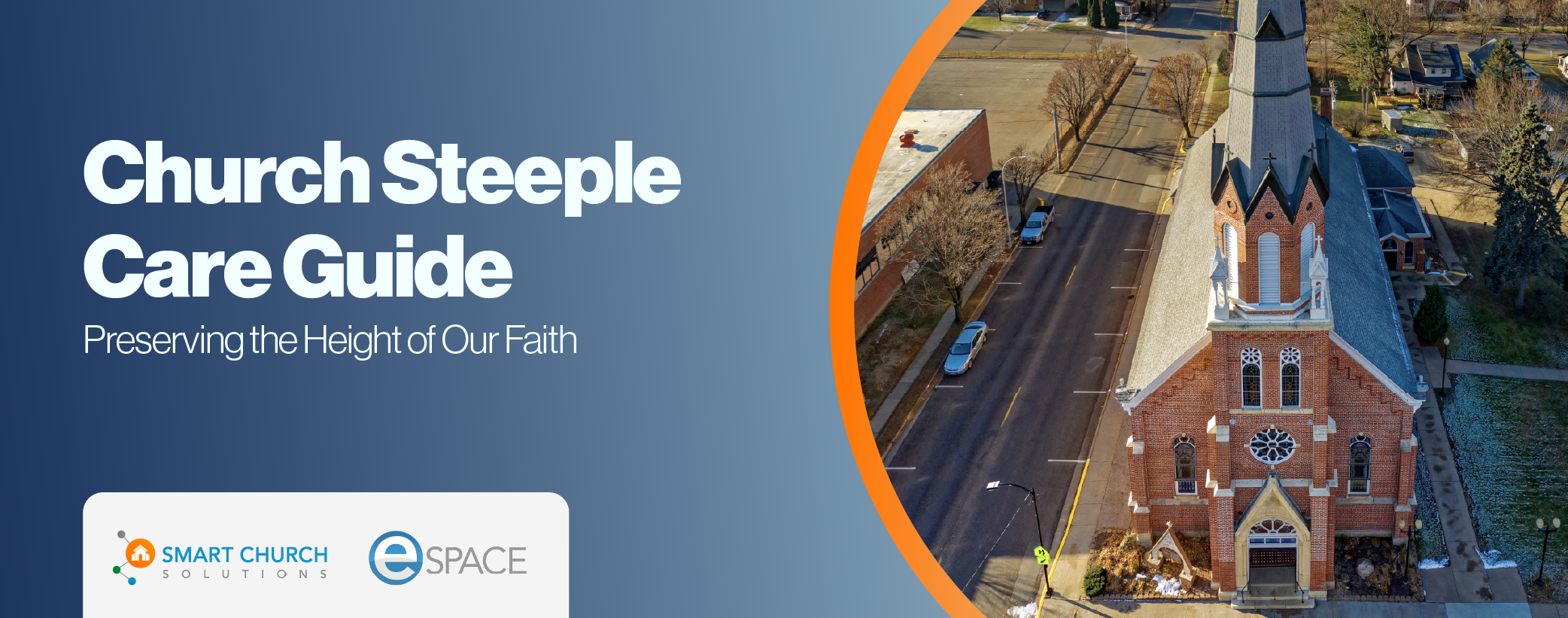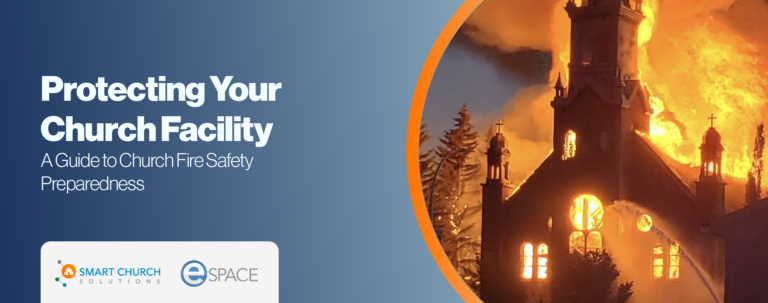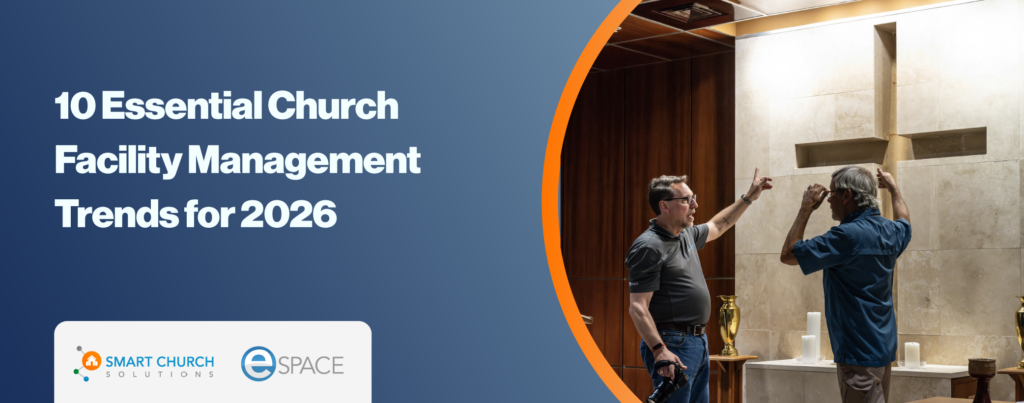As we look up at the steeple of a church, we’re often reminded of our connection to something greater, something higher. Church steeples are more than architectural features; they are symbols of faith reaching toward the heavens. But like any part of a church facility, steeples require care and attention to remain safe, beautiful, and functional.
Here’s how we can ensure our steeples stand strong for future generations.
Who Should Clean and Maintain a Church Steeple?
Leaving steeple cleaning to the professionals ensures both your safety and the protection of your church’s roof from potential damage. Given the height, specialized structure, and unique materials often involved, it’s best to trust this work to professionals who understand the intricacies of historic and religious architecture.
1. Professional Steeple Cleaners
These are folks who understand both the architecture and the unique challenges of cleaning at significant heights. Their experience means they can work safely and carefully, preserving the steeple’s beauty and integrity.
2. Licensed Contractors for Structural Repairs
If your steeple has structural damage, don’t take shortcuts. Hire contractors who specialize in high-access repairs and have a track record in church restoration. Whether it’s shingle replacement or reinforcement, they can handle the work needed to maintain both safety and aesthetics.
Note: Oftentimes, the above tasks are performed by the same vendor: Steeple Cleaning and Restoration Services
3. Certified Rope Access or Lift Operators
For particularly high steeples, rope access or hydraulic lifts may be required. This is not for the faint of heart! These professionals are trained and certified to perform complex work at great heights.
How to Care for Your Steeple
Like any part of your church facility, your steeple requires regular, thoughtful care to preserve both its beauty and structural integrity. Because of its height and exposure to the elements, a steeple faces unique maintenance challenges. By following a careful process of inspection, cleaning, and repair, you can extend its life and protect this symbol of your church’s faith and history.
Start with an Inspection
Every steeple maintenance project should begin with a detailed inspection. An annual inspection is essential to detect signs of damage, like cracks, water issues, or signs of mildew. Take note of any areas that may need special attention due to exposure to the elements. Inspections help you create a plan for both immediate repairs and long-term preservation and may require the use of a telephoto camera and/or a drone to evaluate the steeple exterior.
Choose Gentle Cleaning Methods
Steeples are often crafted from materials like wood, stone, metal, or brick—each with its own vulnerabilities. Because of their age, height, and exposure to the elements, steeples require a careful, gentle approach when it’s time for cleaning. Using the wrong methods can cause lasting damage, so it’s important to prioritize techniques and products that preserve both the structure and its beauty. Here’s how to clean your steeple safely and effectively:
- Low-Pressure Washing: High-pressure washing might sound like a good idea, but it can damage delicate materials or even push water into cracks. Opt for a low-pressure wash to clean without harm.
- Appropriate Cleaners: Use biodegradable, non-acidic cleaners tailored to your steeple’s materials, like stone, brick, or metal. Harsh chemicals can erode or stain surfaces, so a gentle approach is best.
- Soft-Bristled Brushes for Details: For intricate carvings or metalwork, go with a soft-bristled brush and a mild cleaner. This approach preserves the beauty of these details while getting them clean.
Address Mildew, Mold, and Bird Droppings
Steeples, by their very nature, are magnets for moisture and wildlife. Over time, mold, mildew, and bird droppings can stain surfaces, accelerate decay, and even compromise structural integrity if left unchecked. Addressing these issues promptly is key to preserving both the appearance and durability of your steeple. Here are some examples:
- Mold and Mildew Treatments: If mold or mildew has taken hold, apply an anti-fungal treatment. These treatments prevent regrowth and protect your steeple from moisture damage.
- Bird Deterrents: Bird spikes, netting, or other deterrents can be installed to help protect your steeple from corrosive droppings, keeping it clean and preserving its materials.
Repair and Replace as Needed
Once cleaning is complete, it’s the perfect time to conduct a close inspection for any structural concerns that may have been hidden beneath dirt, mildew, or debris. Addressing these issues right away can help prevent minor problems from becoming major repairs.
- Tighten Loose Fixtures: Replace or secure any fixtures or fasteners that may have loosened over time.
- Seal Gaps and Joints: Water is a steeple’s worst enemy. Seal any gaps with weather-resistant sealants to prevent leaks and preserve the internal structure.
Apply a Protective Coating
After repairs are made, consider adding protective coatings to shield your steeple from the elements and prolong its lifespan. The right coatings not only preserve the appearance of your steeple but also defend against moisture and sun damage.
- Waterproof Sealants: For steeples exposed to harsh weather, waterproof sealants offer protection against moisture damage, especially on stone, wood, or metal surfaces.
- UV-Resistant Coatings: Metal or painted surfaces can fade or corrode from sun exposure. UV-resistant coatings help these materials hold up over time.
Establish a Routine Maintenance Schedule
A steeple isn’t a part of your facility you can afford to overlook. Regular care and inspections are key to preventing costly issues and ensuring this important feature remains safe and beautiful for years to come.
- Scheduled Cleanings: Aim for bi-annual or annual cleanings to prevent major issues from developing. It’s much easier to maintain a steeple than to deal with a costly restoration project later.
- Check After Severe Weather: After storms or high winds, inspect your steeple for damage. Catching issues early can save a lot of time, money, and stress down the road.
Safety First: Protecting Your Team and Your Facility
Because of the height and complexity involved, steeple maintenance comes with inherent risks. Prioritizing safety not only protects workers but also helps prevent damage to your building. Keep these precautions in mind when scheduling steeple work:
- Use Fall Protection: Workers should be fully equipped with harnesses, helmets, and other protective gear. Professional steeple cleaners know the risks and are trained to handle them.
- Weather Awareness: Avoid scheduling work on the steeple during rain, snow, or high winds. Safety and visibility are critical for high-access work.
- Insurance and Permits: Make sure the steeple cleaning company is insured and complies with local regulations. If scaffolding or lifts are necessary, check if any local permits are required.
Preserving Our Steeples for the Future
Taking good care of a church steeple is about more than just appearances—it’s about honoring the legacy of the structure and the faith it represents. By investing in regular inspections, gentle cleanings, and thoughtful repairs, we can help our steeples stand tall for generations to come. With a little planning and professional help, our steeples will continue to inspire, serving as a beacon of faith that points heavenward.







